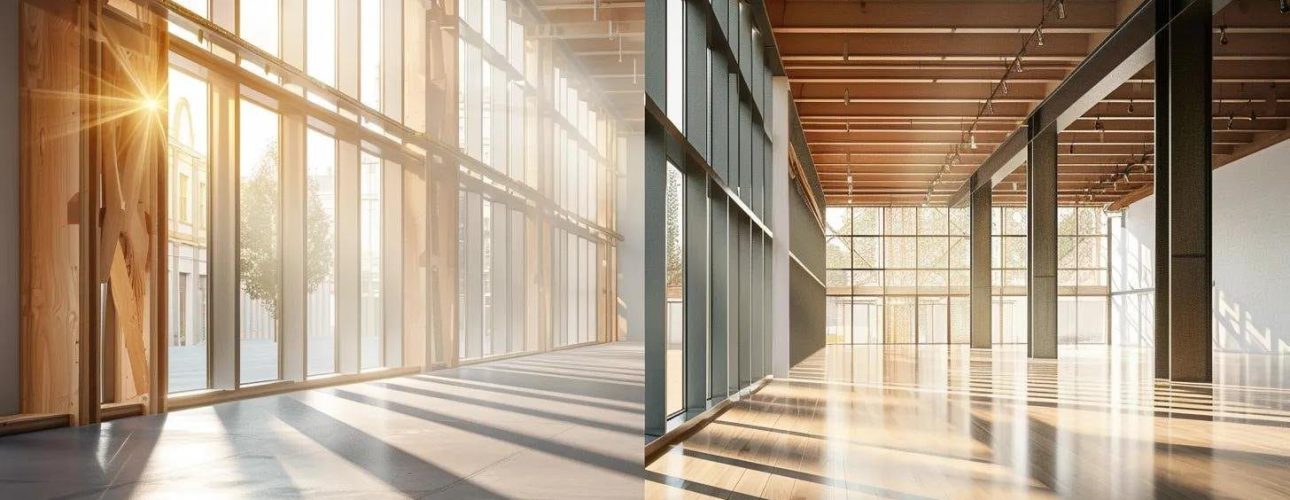When planning your next home repair or renovation, do you know how load-bearing walls impact your design? Understanding these crucial components is essential, especially when transforming spaces like a pantry or bathroom. This article will explore the importance of assessing load-bearing walls, strategies for remodeling around them, and best practices to avoid costly mistakes. By engaging with this content, you’ll gain the knowledge to make informed decisions, ensuring your renovations meet your vision and maintain your home’s structural integrity. Let Anderson Engineering guide you in navigating these vital elements of your project.
Key Takeaways
- Load-bearing walls are essential for supporting key structural elements in your home
- Identifying load-bearing walls is crucial before making any renovations
- Consult a structural engineer to ensure compliance with local building codes
- Reinforcing load-bearing walls maintains structural integrity during renovations
- Utilizing prefabricated systems can streamline renovation projects and enhance structural strength
Defining Load-Bearing Walls and Their Importance in Home Design
Load-bearing walls are crucial elements that support the structure of your home. These walls are typically made from metal, wood, or concrete columns, and understanding their characteristics is essential in construction. You will explore how to differentiate load-bearing from non-load-bearing structures, recognize signs of load-bearing walls in your home, and learn the implications for renovations, including considerations for adding features like a shower.
Characteristics of Load-Bearing Walls
Load-bearing walls are essential in home design as they support key structural elements such as the roof and floors. These walls often carry heavy loads, including plaster, countertops, and other materials found in your home. When assessing renovations, especially in areas like the basement, it is crucial to identify these walls to ensure safety and compliance while making changes that may affect your home’s overall integrity.
Common Materials Used for Load-Bearing Walls
Load-bearing walls can be constructed using various materials, such as hardwood, lumber, and metal, each offering distinct advantages for support and durability. For instance, hardwood is often favored for its strength and aesthetic appeal, making it a popular choice in areas where visibility is essential, such as near kitchen cabinets. When planning a renovation, understanding the materials used in these walls helps you make informed decisions about structural changes while maintaining safety and integrity.
- Load-bearing walls support key structural elements of the home.
- Common materials include hardwood and lumber for strength and stability.
- Awareness of these materials is essential during renovations.
Comparing Load-Bearing and Non-Load-Bearing Structures
When comparing load-bearing and non-load-bearing structures, it’s essential to recognize how load-bearing walls support critical elements of your home, such as the floor and roof. Load-bearing walls are typically constructed from masonry or equipped with metal and adhesive materials to ensure stability, while non-load-bearing walls primarily serve as partitions with no structural responsibility. Understanding this distinction is vital when planning renovations, as altering a load-bearing wall without proper reinforcement can lead to structural issues, including mold or compromised integrity of the surrounding areas.
Signs Your Home Has Load-Bearing Walls
Identifying load-bearing walls in your home is essential for any renovation project. You may notice that walls positioned along the center of your home or those located directly above or below one another across multiple floors often serve a load-bearing purpose. Key indicators include walls that are thicker than typical drywall partitions, those composed of steel or reinforced wood, or walls that support heavy features like an attic or upper-level flooring.
- Look for walls that align vertically across stories.
- Check thickness; load-bearing walls are generally thicker.
- Identify walls supporting heavy features, like attics or wood flooring.
Knowing the value of load-bearing walls shapes your understanding of a home’s structure. Before you start any renovation, you must assess these walls carefully; they are the bones of your home, and their integrity matters.
Assessing Load-Bearing Walls Before Renovating
Understanding load-bearing walls is critical before starting any home improvement projects. You’ll want to identify these walls in your floor plan, assess their structural integrity and condition, and investigate any building codes applicable to your renovations. Seeking professional assistance for inspections ensures compliance and safety, especially in areas like your laundry room or when considering changes to your ceiling.
Identifying Load-Bearing Walls in Your Home
To identify load-bearing walls in your home, start by examining the floor plan and looking for walls that align with beams or joists directly above or below. These walls are often made from sturdy building materials like concrete or brick and will typically be thicker than non-load-bearing walls. Observing areas where heavy items, such as appliances or storage, are located can also help reveal critical structural support elements, guiding you in your renovation planning.
Evaluating Structural Integrity and Condition
When evaluating the structural integrity and condition of load-bearing walls in your home, it’s important to look for signs of deterioration, such as mildew or moisture damage, especially in areas like basements or bathrooms. These issues can compromise the wall‘s function and lead to significant problems during renovations. Ensure that proper lighting is available while inspecting these areas, as it can help you identify any tile or surface damage that may signal potential structural weaknesses, allowing you to address these issues proactively before starting your project.
Investigating Building Codes and Compliance
Before beginning renovations that involve load-bearing walls, it is essential to investigate relevant building codes and compliance regulations. Each region has specific codes that dictate how structural changes should be handled to ensure safety and legality. Familiarizing yourself with these codes not only helps you avoid potential fines but also ensures that your renovations will endure the test of time. Consultation with a local structural engineer or building inspector can provide you with the guidance necessary to navigate these regulations effectively:
- Understand the necessity of building codes for structural safety.
- Consult local authorities or professionals for accurate information.
- Ensure compliance to prevent costly adjustments later.
Seeking Professional Assistance and Inspections
Engaging a structural engineer for professional assistance during your renovation planning is a wise decision. They can accurately identify load-bearing walls and help you understand the implications of modifications on your home’s overall integrity. These experts ensure that your renovations comply with local building codes and provide insights into the safest methods for making structural changes, ultimately protecting your investment and enhancing your home’s safety.
Once you’ve assessed the load-bearing walls, you face a choice. Finding ways to remodel around them can turn challenges into opportunities that enhance your space.
Strategies for Remodeling Around Load-Bearing Walls
When remodeling around load-bearing walls, consider smart approaches to open floor plans that maintain structural integrity. Explore techniques for reinforcing these walls to support any renovations. Discover alternatives to completely removing load-bearing walls and learn how to utilize beams and columns effectively in your projects. These insights will help you achieve your design goals while ensuring safety and compliance.
Smart Approaches to Open Floor Plans
When remodeling around load-bearing walls, it is essential to employ smart approaches that respect the structural integrity of your home while achieving your design goals. You can create an open floor plan by utilizing beam replacement or strategically placing columns to maintain support while increasing usable space. Consider collaborating with a structural engineer to explore design alternatives such as archways or half-walls, which can provide an open feel without compromising safety:
- Utilize beam replacement for enhanced support.
- Consider strategic column placement.
- Explore design alternatives like archways or half-walls.
Techniques for Reinforcing Load-Bearing Walls
Reinforcing load-bearing walls is vital during renovations to maintain structural integrity while accommodating design changes. You might consider the use of steel beams or additional framing to distribute weight more evenly across the wall, which supports any alterations made to adjacent spaces. Furthermore, consulting a structural engineer can provide tailored techniques, such as utilizing joist hangers or installing posts, that fit your specific renovation needs and ensure compliance with local building codes:
Alternatives to Removing Load-Bearing Walls
When considering renovations, alternatives to removing load-bearing walls can be highly effective in maintaining your home’s structural integrity. One option is the incorporation of beams and columns, which can help create the desired open space without compromising support. Additionally, architectural features such as archways or half-walls offer a stylish solution that provides a sense of openness while still addressing structural needs:
Utilizing Beams and Columns in Renovation Projects
Incorporating beams and columns into your renovation projects is an effective strategy for maintaining structural integrity while achieving your design goals. By strategically placing these supports, you can create open spaces without sacrificing safety or compliance with building codes. Consulting a structural engineer before making these changes ensures that your designs are both functional and secure, providing you the peace of mind needed for a successful renovation.
Modifying a load-bearing wall can change everything in a home, for better or worse. The wrong move can lead to serious problems and costly repairs, a fate that no homeowner desires.
Consequences of Improper Modifications to Load-Bearing Walls
Improper modifications to load-bearing walls can lead to significant structural risks, posing threats to your home’s stability. You should be aware of the legal implications tied to unpermitted changes, which can result in fines or safety violations. Additionally, the financial impact of structural failures can be substantial, as case studies have shown, highlighting the importance of understanding these consequences before starting renovations.
Understanding Structural Risks Involved
Understanding the structural risks involved with improper modifications to load-bearing walls is critical for any renovation project. Altering these walls without proper assessment can lead to severe issues such as sagging floors, cracks in walls, or even catastrophic structural failure, jeopardizing the safety of your entire home. You should always consult a qualified professional to ensure that any changes you consider adhere to local building codes and maintain the integrity of your home’s framework.
Legal Implications of Unpermitted Changes
Making unpermitted changes to load-bearing walls can lead to serious legal implications for you as a homeowner. Local building codes are established to maintain the safety and structural integrity of your property, and failing to adhere to these regulations can result in fines, the requirement to undo the modifications, or even legal actions. Engaging a structural engineer before starting any renovations ensures compliance with local laws and protects your investment from potential liabilities associated with improper modifications.
Financial Impact of Structural Failures
Improper modifications to load-bearing walls can lead to severe financial repercussions for homeowners. Structural failures resulting from these mistakes may necessitate costly repairs that far exceed the initial renovation budget. For example, if a load-bearing wall is altered without proper reinforcement, you could face damages such as sagging floors or significant cracks, which not only impact your home’s value but may also require professional intervention, driving up expenses substantially.
Best Practices for Renovating With Load-Bearing Walls
When renovating with load-bearing walls, it’s vital to collaborate with architects and engineers to ensure structural integrity. You’ll design functional spaces around these elements while prioritizing safety during all phases of the project. Additionally, incorporate aesthetics seamlessly with structural needs, creating a balanced environment that reflects your vision, all while maintaining compliance and stability.
Collaborating With Architects and Engineers
Collaborating with architects and engineers is crucial when renovating around load-bearing walls. These professionals help you assess the structural implications of your design choices, ensuring that your renovations maintain safety while achieving your vision. Their expertise allows for innovative solutions, such as incorporating support beams or creative space layouts, which can enhance both the functionality and aesthetics of your project.
Designing Functional Spaces Around Load-Bearing Elements
When designing functional spaces around load-bearing elements, it’s essential to embrace their presence rather than try to conceal them. These walls provide crucial support, and incorporating them into your design can enhance both the functionality and aesthetics of your project. For instance, you can create built-in shelving or seating areas alongside these walls, effectively utilizing the space while ensuring safety and compliance with building codes:
Prioritizing Safety During Renovations
Prioritizing safety during renovations is essential, especially when working with load-bearing walls. You need to engage a qualified structural engineer to evaluate the walls and ensure that any modifications meet local building codes. By recognizing the importance of these walls and securing professional guidance, you can protect the integrity of your home and avoid potential hazards that might arise during or after renovations:
Incorporating Aesthetics With Structural Needs
Incorporating aesthetics with structural needs involves creatively designing around load-bearing walls while ensuring safety and compliance. You can achieve a pleasing appearance by utilizing the presence of these walls rather than hiding them; for instance, consider adding built-in shelving or decorative elements that align with your overall design vision. By collaborating with a structural engineer, you can ensure that your aesthetic choices do not compromise the wall‘s structural integrity, allowing you to enjoy a beautiful and functional space.
As you plan your renovation, consider how designs can adapt and evolve. The future holds exciting developments in load-bearing walls that promise both strength and style.
Future Trends in Load-Bearing Wall Designs
Innovations in construction materials are transforming how load-bearing walls are designed and integrated into renovation projects. You will explore how technology enhances structural engineering, ensuring safety and efficiency. Sustainable practices play a vital role in modern renovations, while prefabricated load-bearing systems offer convenience and effectiveness. These trends reflect an evolution in building practices that prioritize both functionality and environmental responsibility.
Innovations in Construction Materials
Innovations in construction materials are significantly reshaping the approach to load-bearing walls in renovations. For instance, using engineered timber and advanced composite materials provides enhanced strength while reducing weight, allowing for more flexible design options without compromising structural integrity. By incorporating these modern materials, you can create more open layouts and aesthetically pleasing environments, addressing both functional and visual requirements in your home renovation projects.
The Role of Technology in Structural Engineering
Technology plays a significant role in modern structural engineering, particularly in the design and construction of load-bearing walls. Advanced software tools allow engineers to create precise models that simulate the performance of structures under various conditions, ensuring safety and compliance. By utilizing these innovations, you can make informed decisions during renovations that maintain the integrity of load-bearing walls while optimizing the overall design and functionality of your home.
Sustainable Practices in Renovation Projects
Sustainable practices in renovation projects are becoming increasingly important as homeowners recognize the need to minimize their environmental impact while enhancing their living spaces. When addressing load-bearing walls, consider using reclaimed materials or sustainable alternatives like engineered wood, which not only offer strength but also reduce resource depletion. By incorporating energy-efficient designs and prioritizing insulation, you can create a more comfortable environment while lessening your home’s carbon footprint.
- Utilize reclaimed materials to enhance sustainability.
- Incorporate engineered wood for strength and resource conservation.
- Prioritize energy-efficient designs and insulation for comfort.
A Look at Prefabricated Load-Bearing Systems
Prefabricated load-bearing systems are revolutionizing the way you approach renovations. These systems, built off-site and transported for assembly, offer a fast and efficient solution for enhancing structural integrity while reducing on-site labor costs. By integrating prefabricated components into your projects, you can streamline construction timelines and minimize disruptions to your daily life, all while ensuring compliance with local building codes.
- Increased efficiency in renovation projects.
- Reduced labor costs and shorter timelines.
- Enhanced structural integrity with prefabricated materials.
Conclusion
Understanding load-bearing walls is essential for any renovation project as they provide crucial structural support for your home. Recognizing the characteristics and materials used in these walls allows you to make informed decisions during renovations, ensuring safety and compliance with building codes. By engaging a structural engineer and exploring alternative design options, you can enhance both functionality and aesthetics without compromising integrity. Prioritizing these elements protects your investment and ensures the long-term stability of your home.





